-
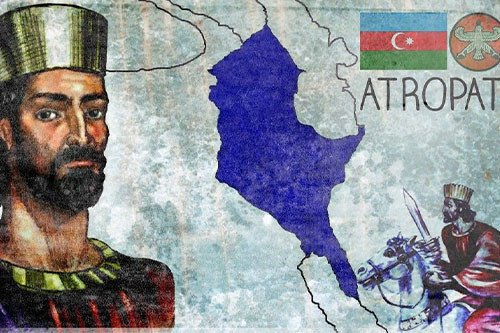 What Is the Origin of the Name "Azerbaijan"? 4 Theories Behind the Country's Name
901
1
What Is the Origin of the Name "Azerbaijan"? 4 Theories Behind the Country's Name
901
1
-
 Caspian Caviar: Discovering the Black Gold of Azerbaijan
254
0
Caspian Caviar: Discovering the Black Gold of Azerbaijan
254
0
-
 May 28 – Azerbaijan’s Independence Day: A Symbol of Pride and Freedom
493
0
May 28 – Azerbaijan’s Independence Day: A Symbol of Pride and Freedom
493
0
-
 Discover Nizami Street — Baku’s Cultural and Social Hub
492
1
Discover Nizami Street — Baku’s Cultural and Social Hub
492
1
-
 From Euro to Manat: How Azerbaijani Currency Tells the Story of Culture, History, and National Spirit
423
0
From Euro to Manat: How Azerbaijani Currency Tells the Story of Culture, History, and National Spirit
423
0
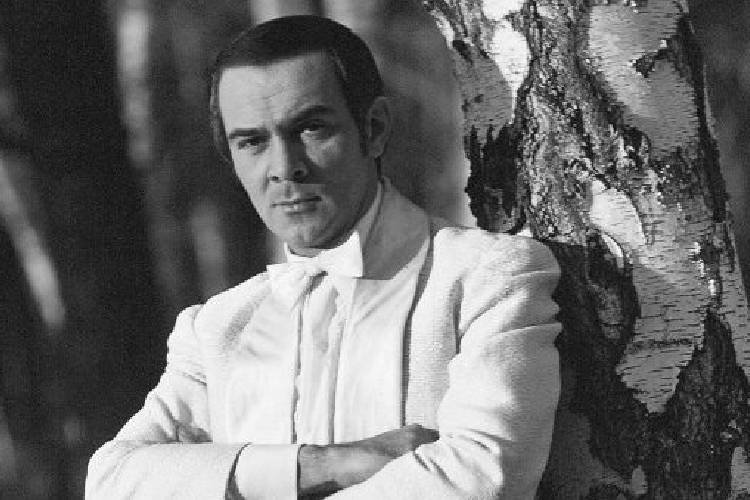
Muslim Magomayev: the Voice That Defined an Era
Muslim Magomayev remains one of the most iconic cultural figures of the Soviet Union and Azerbaijan — a singer whose voice transcended genres, borders, and generations. Possessing a rare combination of operatic power, lyrical sensitivity, and natural charisma, he became a symbol of artistic excellence and emotional depth for millions of listeners across the USSR. Born in 1942 in Baku into a family deeply connected to music and art, Magomayev seemed destined for the stage. His grandfather, also named Muslim Magomayev, was a prominent Azerbaijani composer, and this artistic legacy played a crucial role in shaping the young performer’s path. From an early age, he demonstrated an exceptional vocal range and musical intuition, which later allowed him to move effortlessly between opera, classical romances, and popular music. Magomayev’s rise to fame in the 1960s was rapid and unprecedented. At a time when Soviet performers were often confined to strict stylistic boundaries, he broke conventions by combining operatic technique with accessible, emotionally rich songs. His performances were equally compelling in grand opera houses and on television screens, where he became a familiar and beloved presence.One of his most celebrated classical roles was Figaro in The Barber of Seville, which showcased his strong baritone and theatrical confidence. However, Magomayev was not limited to traditional opera. He achieved legendary popularity through his interpretation of the Troubadour in the animated musical Bremen Town Musicians. This role, though lighter in genre, became iconic: his warm, expressive voice gave the character depth and charm, making the songs instantly recognizable and eternally popular across generations. Beyond specific roles, Magomayev was known for his extraordinary concert repertoire. He performed arias by Verdi and Puccini, Neapolitan songs, Soviet classics, and lyrical ballads, often within a single program. This versatility turned his concerts into cultural events rather than simple performances. Audiences admired not only his voice, but also his refined stage presence and sincere emotional delivery.In the Soviet Union, Magomayev’s fame was comparable to that of the greatest international stars, yet he maintained a rare artistic independence. He refused to conform fully to commercial expectations, choosing quality and artistic integrity over constant touring. This decision only strengthened his reputation as an artist of principle and depth. For Azerbaijan, Muslim Magomayev became a cultural ambassador, representing the nation’s musical tradition on the world stage. His success demonstrated how Azerbaijani artistry could resonate far beyond national borders, while his personal identity remained closely tied to Baku and its cultural heritage. Today, Magomayev’s legacy continues to live on through recordings, archival performances, and the enduring admiration of listeners. His voice is often described as timeless — capable of evoking nostalgia, pride, and emotion even decades after his peak years. Muslim Magomayev was not simply a famous singer; he was a defining voice of an era, whose artistry helped shape the cultural memory of the Soviet twentieth century.

Thor Heyerdahl and Gobustan: Exploring the Ancient Rock Art and Legends of Azerbaijan
Thor Heyerdahl’s name is firmly associated with great journeys, bold hypotheses, and a lifelong commitment to preserving the heritage of ancient civilizations. For Azerbaijan, he became more than just a researcher — he was someone who looked at Gobustan and saw not random images carved into stone, but fragments of a global human story. The majestic cliffs, the silence of the rocky desert, and the enigmatic symbols left by ancient peoples inspired him to ideas that continue to intrigue archaeologists and historians around the world. Heyerdahl first visited Azerbaijan in the late 20th century and immediately felt the extraordinary power of Gobustan. The massive boulders polished by wind, the carvings depicting hunting scenes, rituals, and maritime imagery — all of it seemed to him part of forgotten connections between distant cultures. He was astonished by how well the petroglyphs had been preserved and often remarked that certain motifs resembled images he had encountered in other parts of the world during his expeditions. One carving in particular left a deep impression on him: a stone depiction of a reed boat, known locally as a “kiyak.” He compared it to the ships of ancient Scandinavians and saw in it a possible link connecting the Eastern Caucasus with the northern regions of Europe in remote antiquity. Although his theories were met with mixed reactions, they encouraged many scholars to view Gobustan from a new perspective — not merely as an open-air museum, but as part of a much larger human narrative. Heyerdahl saw Gobustan as a place where time seems to unfold in layers. One step reveals traces of tribes who hunted gazelles thousands of years ago; another brings you to maritime motifs hinting at contact with distant lands. For him, Gobustan was not simply a collection of artifacts but a living organism in which the past continues to breathe. He often said that here one could feel like a wanderer engaged in a silent conversation with people who lived millennia before our time. Beyond his scientific interests, Heyerdahl was captivated by the very atmosphere of Gobustan. A land where stones take the shape of legends and the wind composes its own music seemed to him a place capable of telling the world about the dawn of human civilization no less than Egypt or Mesopotamia. His journeys to Azerbaijan became a significant chapter not only in his personal research but also in the worldwide recognition of Gobustan as a site of exceptional cultural importance. Today, Thor Heyerdahl’s legacy lives on in the respect for his daring ideas and in the continued fascination with Gobustan. Visitors come not only to admire the ancient carvings but also to experience the same sense of wonder that once inspired the famous explorer. Among the sunlit stones shaped by the Caspian breeze, it is easy to imagine him walking along the rocky paths, studying the carved lines and trying to hear the voice of antiquity. His perspective helped place Gobustan firmly within the context of global cultural history, becoming an important contribution to the appreciation of Azerbaijan’s unique heritage. Those who visit today can still feel the same force that once led Heyerdahl to believe in the great routes of antiquity. Gobustan continues to live, inspire, and astonish — and the story of Thor Heyerdahl is just one of many threads connecting the modern world with humanity’s millennia-old mysteries.
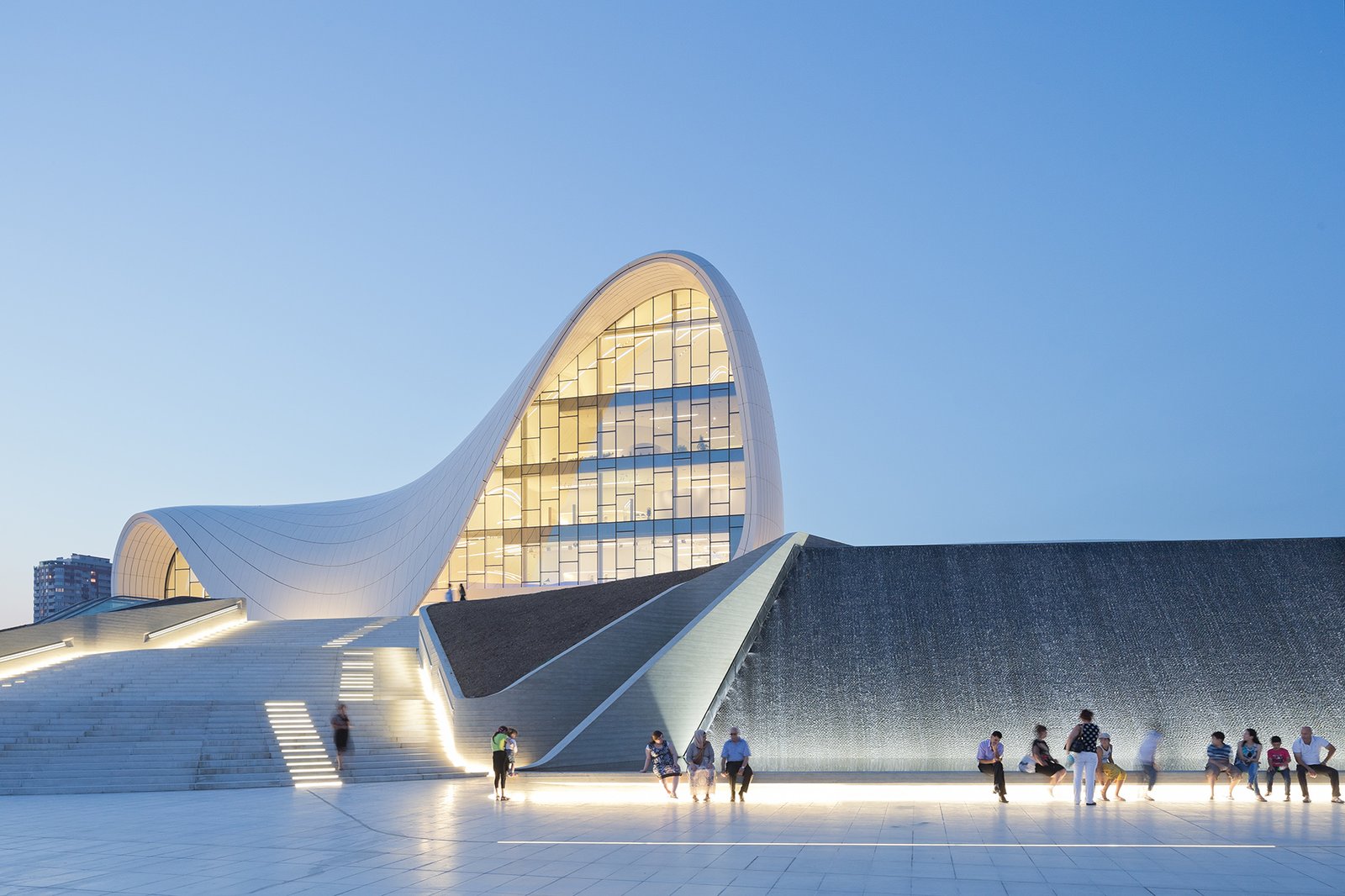
Heydar Aliyev Center in Baku: Architecture, History & What to See in 2025
The Heydar Aliyev Center in Baku is widely regarded as one of the most iconic architectural landmarks of modern Azerbaijan. Designed by Zaha Hadid, it represents far more than a striking building: it is a new type of cultural landscape where a museum, exhibition halls, a concert venue, conference facilities, and public spaces are seamlessly integrated into a single, flowing environment. Its fluid lines, absence of sharp angles, and the dynamic interplay of surfaces have turned the center into an essential visual symbol of Baku, highlighting the city’s commitment to innovation and contemporary art. The idea of creating such a cultural complex emerged in the mid-2000s, when an international design competition was announced. In 2007, the winning proposal by Zaha Hadid Architects introduced a radical departure from the traditional architectural aesthetic of the city. Construction began that same year and continued for five years, culminating in the official opening on May 10, 2012. The project demanded extremely advanced engineering solutions: the curved surfaces, unified shell, steel frame, and composite exterior panels could only be realized through precise digital modeling technologies. The construction cost is estimated at around 250 million USD, reflecting both the scale and technical ambition of the undertaking. The architectural concept of the center is built on the idea of uninterrupted movement. Exterior surfaces flow effortlessly into the interior, as if forming one continuous form. The building appears to rise from the ground, bend, extend, and descend again, giving the impression of a living, breathing structure. This approach was intended as a conscious contrast to the Soviet architectural legacy of Baku. The center expresses the vision of a modern Azerbaijan—dynamic, culturally active, and engaged in global dialogue. After its opening, the building quickly drew international attention. In 2014, the Heydar Aliyev Center received the prestigious “Design of the Year” award from the Design Museum in London, further securing its reputation as one of the most compelling architectural achievements of its era. It frequently appears in global architectural publications and today stands among the most recognizable symbols of the country. Inside, the center is designed to remain flexible and adaptable to various types of events. The first level features a large atrium and a museum area with a permanent exhibition dedicated to the life and legacy of Heydar Aliyev. The exhibit incorporates interactive technology and modern multimedia solutions, making it engaging for visitors of all ages. Nearby are expansive gallery spaces that regularly host temporary international exhibitions—ranging from contemporary art and design installations to historical and scientific showcases. One of the central elements of the complex is the large auditorium, which seats approximately one thousand visitors. It is equipped with advanced acoustics, stage systems, and multimedia infrastructure, allowing the venue to accommodate concerts, theater performances, conferences, forums, and major presentations. Throughout the building, additional spaces support lectures, workshops, educational programs, and business meetings. Gentle architectural transitions between halls create the feeling of an interior landscape that naturally guides visitors through the building. Visitor-focused infrastructure plays an important role as well. Bright, spacious lobbies, relaxation zones, cafés, shops, information points, and other amenities make the experience comfortable and intuitive. Many guests spend several hours here, enjoying the exhibitions or simply immersing themselves in the atmosphere and scale of the interiors. The importance of the Heydar Aliyev Center for Baku extends far beyond its architectural beauty. It has become a cultural anchor of the capital, hosting major international events and helping shape Azerbaijan’s contemporary image on the global stage. The building’s silhouette is often featured in tourism campaigns, promotional materials, and exhibitions abroad, presenting the country as a hub of cultural innovation, modern design, and progressive urban development. The center has also become a beloved public destination. Locals and tourists alike come to explore the rotating exhibitions, visit the museum, attend concerts, or simply walk around the vast open plaza surrounding the building. The exterior is especially impressive at sunrise and sunset, when soft light and long shadows emphasize the smoothness of its curves. Ultimately, the Heydar Aliyev Center is not just an architectural masterpiece—it is a cultural organism that unites art, education, public life, and contemporary aesthetics. It has introduced a new visual language to the city and has become a symbol of Azerbaijan’s pursuit of innovation and cultural progress.
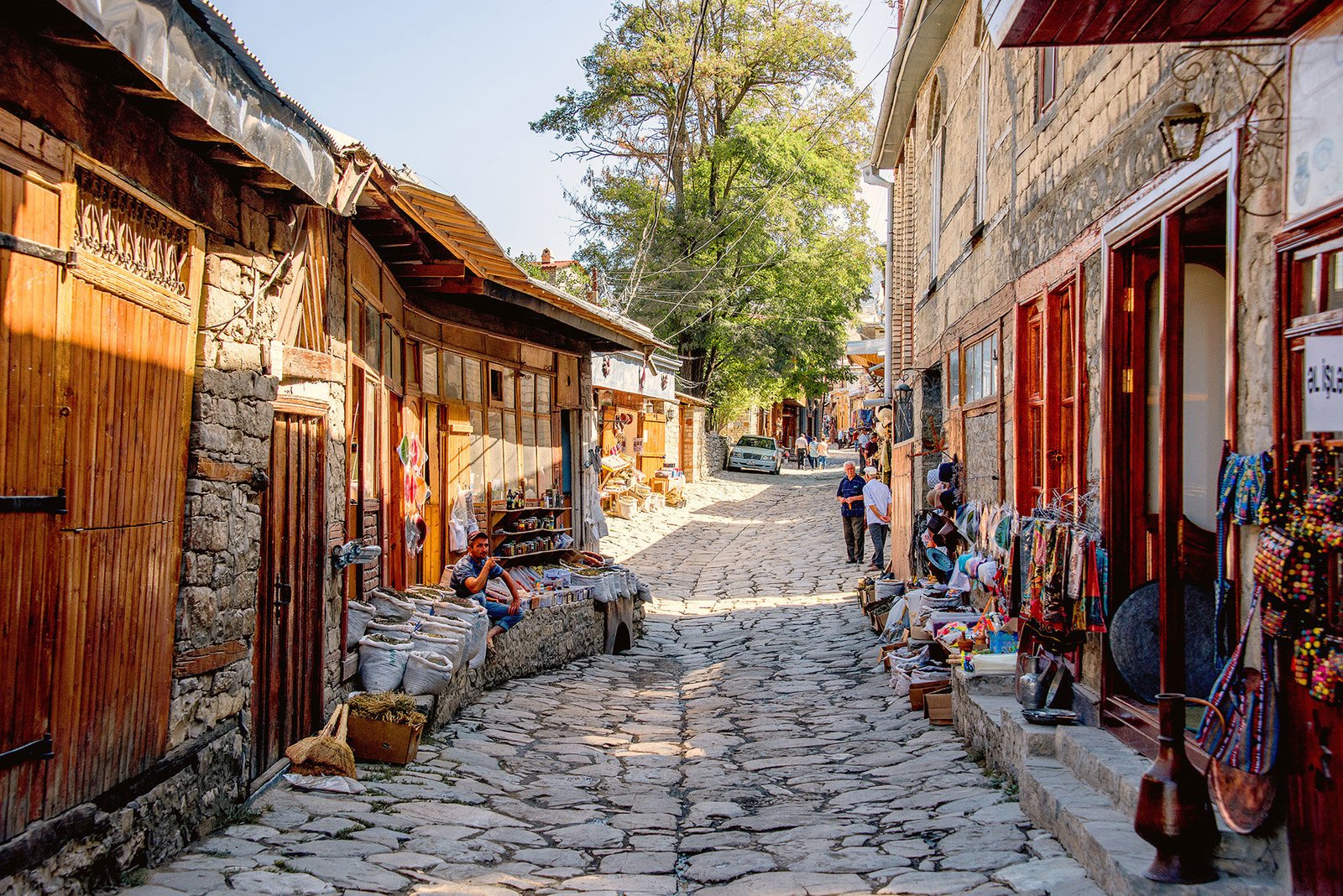
Lahij Azerbaijan — A Journey Into Centuries-Old Crafts and Mountain Heritage 2025
Lahij is one of those places where time seems to slow down on purpose. This ancient mountain village, hidden on the slopes of the Greater Caucasus, welcomes visitors with its stone-paved streets, shining copperware, and the warm scent of wood drifting from the workshops of local craftsmen. Everything here reminds you that craftsmanship is not a profession but a legacy passed down from father to son for centuries. It is believed that Lahij was founded more than fifteen hundred years ago, and even today a traveler can feel the breath of those distant eras. Stone houses built from river rock look as if they have grown out of the ground itself. Remarkably, even the ancient water supply and sewerage system — created long before modern engineering standards — has survived to this day. Locals say it was designed by master builders who took inspiration from Persian cities, and this story lives in Lahij as firmly as the stone walls of its homes.Lahij has long been famous for its blacksmiths and coppersmiths. The rhythmic ring of hammers and the singing of metal form the soundtrack of the village. The workshops operate much as they did two centuries ago: without hurry, with respect for the material, and with a deep love for detail. Locals say that every pattern carved into a copper dish carries meaning — a mark of luck, a symbol of prosperity, or an ancient protective motif. One popular legend tells of a master who forged a bowl of such beauty that a shah demanded it for his palace. But when he saw how gently the craftsman held the bowl, the shah said, “Let this vessel remain where it was born.” From that story came the belief that Lahij copper does not leave its native mountains without a blessing. The traditions of craftsmanship here are intertwined with nature. In the morning, a light mist settles over the rooftops, the river murmurs against stone walls, and the narrow streets reflect sunlight as if the stones are glowing from within. Every house, every balcony, every doorway feels like a small work of art. Even everyday objects carry the imprint of their maker’s hands. Travelers often speak of the special energy of Lahij. It is impossible to rush here. The very air invites you to pause, look around, and feel how much has been preserved from the times when people lived slower, gentler, and more attentively. In these mountains, everything sounds clearer — the wind, the river, and human stories. Lahij is rich in legends. One of the most cherished tells of a young man who dreamed of becoming a great master. He traveled far in search of knowledge and returned many years later. But the moment he crossed the threshold of his home, he heard the familiar sound of the hammer — and realized that the wisdom he had sought across the world had been here all along, in the hands of his aging father. Lahij is exactly this kind of place: it reminds you that the most important values live close to us, in traditions, in family stories, and in the mastery of our ancestors. Today Lahij is not just a “village of masters.” It is a living museum where craftsmanship isn’t displayed — it continues. It is a space where the past does not disappear but becomes part of the present. Here you can see copperware being born, carpets being woven, and memories of the past safely preserved beneath old rooftiles. Lahij does not try to impress — it simply lives, and that is its magic. Arriving here feels like stepping across the boundary of time. Mountain trails, ancient workshops, quiet evenings by the river, and stone streets once walked by generations of craftsmen create an atmosphere where history breathes in harmony with nature. Lahij offers a rare sense of connection to a culture that has not vanished but continues to live in every detail. A journey to Lahij is a chance to see Azerbaijan in its authenticity. It is an encounter with a past that did not remain in books but is lovingly preserved in the hands of master artisans. It is rest for the soul — a look deep into time and into oneself. And when leaving the village, every visitor takes away more than impressions — they carry with them a feeling of something genuine, lasting, and timeless.
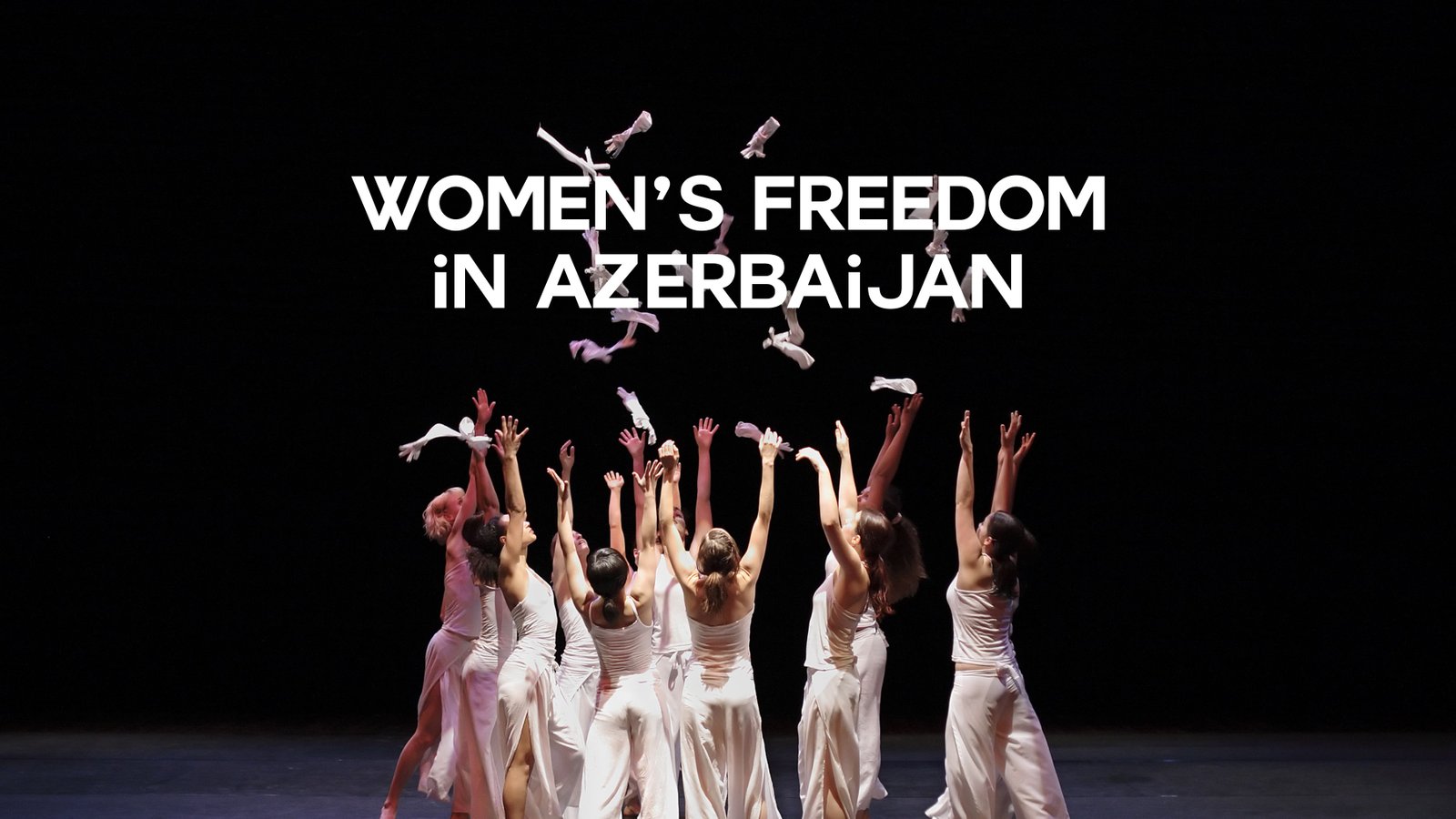
Women’s Rights in Azerbaijan: Education, Freedom, and the 1918 Breakthrough
The history of women’s freedom in Azerbaijan is a story of early reforms, bold enlighteners, and a society that, at the beginning of the 20th century, made a leap decades ahead of neighboring regions. Today, Azerbaijan is often regarded as one of the most progressive countries in the Muslim East in terms of women’s rights, and this status was preceded by a long path—from the first schools for girls to the granting of voting rights to women in 1918. The first changes began in the 19th century, when private educational institutions founded by intellectuals and philanthropists started appearing in major cities, especially in Baku. One of the most important steps was the initiative of Hasan bey Zardabi — the founder of the first Azerbaijani newspaper Ekinchi and an active advocate for women’s education. Thanks to the efforts of progressive educators, the first secular schools for girls were opened, breaking old stereotypes that confined women solely to domestic life. These schools became a true social revolution: young girls gained access to literacy, literature, history, sciences, and other subjects previously inaccessible to most women. The oil bourgeoisie of Baku also made a significant contribution. Wealthy merchant families, such as the Taghiyevs, actively financed educational and social projects. The most striking example was the opening of the first secular Muslim girls’ school in 1901. This became a turning point that made education for women not an exception but a new norm. For the first time, girls from Muslim families could receive systematic knowledge, and many graduates later became teachers, translators, and public figures. By the early 20th century, the idea of women’s education had become part of a broader cultural rise. Newspapers, journals, and theatrical productions addressed the topic of equality and the woman’s role in society. During this period, influential figures such as Mirza Fatali Akhundov, Jalil Mammadguluzadeh, and Uzeyir Hajibeyli worked actively, emphasizing the importance of education and social freedom for women through their literature and public work. The culmination of this movement came in 1918 — the year of the establishment of the Azerbaijan Democratic Republic, the first democratic republic of the East. It was then that Azerbaijani women received the right to vote on equal terms with men — two years earlier than women in France and nearly half a century earlier than in some other countries of the region. This decision became a historic breakthrough: despite the complex political environment, the young republic adopted one of the most progressive laws of its time. The reform became possible thanks to several factors — the political will of new reformers, the influence of Western-educated intellectuals, and gradual societal changes brought by the modernization of Baku and the development of secular culture. After 1918, women took an increasingly active role in public life: they became doctors, teachers, actresses, and journalists. Higher education also became accessible. Baku State University and the Baku Conservatory accepted women from their early years, and by the mid-20th century, the number of female specialists grew rapidly in fields ranging from medicine to engineering. Today, Azerbaijan continues this tradition. Women actively participate in business, scientific research, public administration, culture, and tourism. A thousand-year cultural foundation that combines respect for family and a pursuit of education fits harmoniously into the country’s modern identity. The history of women’s freedom in Azerbaijan is a story of steps taken boldly, progressively, and decisively. It is a path from the first schools to state reforms, from private initiatives to national policies of equality. And it is this blend of tradition, culture, and modernity that makes the development of women’s rights in Azerbaijan a unique phenomenon in the region.
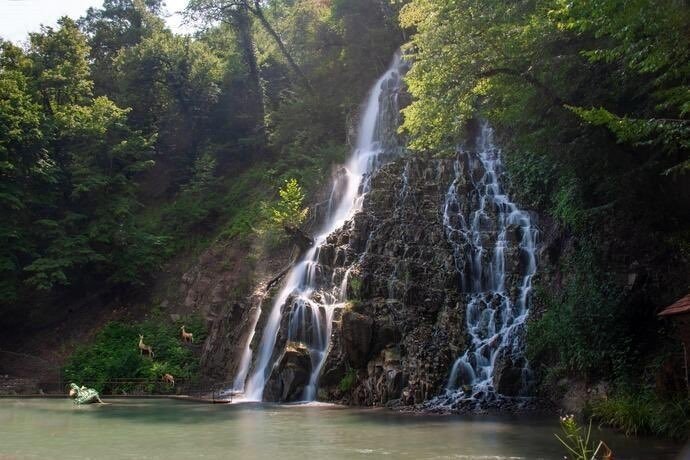
Seven Beauties Waterfall in Gabala — History, Legend & a Visitor-Friendly Route
In the vicinity of Gabala, not far from the village of Vandam, lies one of the region’s most famous natural attractions — the Seven Beauties Waterfall. It received its name thanks to its cascading structure: water descends along the mountainside in several tiers, and each of them forms a separate mini-waterfall. The lower cascades are accessible without any climb, while the upper ones can be reached by following a staircase that leads through a shady forest. There is also a local legend often told to visitors. According to the story, many years ago seven sisters from a nearby mountain village used to come here to fetch water. One day they were seen by a wandering poet who was struck by how gracefully they moved along the path and how their laughter echoed between the rocks. He described them as “seven beauties walking one after another like cascading streams.” Over time, this poetic comparison became the official name of the waterfall. The path begins near small teahouses and rest areas at the foot of the ascent. The place is usually lively: some guests take photos, while others enjoy tea brewed with spring water. From there, the climb begins — the steps are sometimes steep and damp, especially during the rainy season, so visitors should be cautious. Still, the route is short and manageable even for those without hiking experience. As you ascend, new tiers of the waterfall come into view. The sound of rushing water grows louder, the air turns cooler, and the forest becomes noticeably denser. In summer, this feels especially refreshing — the shade and moisture make the walk comfortable even on hot days. In spring, the waterfall is at its strongest, while in autumn it is framed by vivid foliage, making it particularly photogenic. Although the route is not difficult, it is the gradual reveal of each cascade that creates the main impression. Every level differs slightly in shape and flow, and at the top you’ll find quieter, more secluded corners visited only by the most persistent travelers. A trip to the Seven Beauties usually takes little time and can easily be combined with other natural sights of Gabala. The proximity to the road, facilities at the foot of the trail, and short walking distance make this place suitable for visitors of all ages. The waterfall remains one of the most popular spots in the region thanks to its accessibility, natural beauty, and pleasant microclimate. It is not a challenging trek or an extreme adventure — rather a brief and scenic walk that reveals a charming part of Gabala’s landscape and gives a refreshing break from city life.

Azerbaijani Sweets — Traditions, Flavors, and the History of National Desserts
Azerbaijani cuisine is just as famous for its sweets as it is for its meat dishes, fragrant pilaf, and dolma. Here, at the crossroads of ancient caravan routes where merchants from Persia, India, the Ottoman Empire, and Shirvan once met, a remarkable confectionery tradition was born — one in which every sweet is not just a dessert, but a small story connected to craftsmanship, holidays, ancient techniques, and regional identity.The most famous delicacy is, without a doubt, Sheki halva. Its recipe has been passed down for centuries through generations of hereditary masters in Sheki and has changed very little over the past two and a half centuries. The thinnest lattice called reshte, drawn by hand from rice flour, is layered on a copper tray with such precision that the master seems to paint on glass. Between the layers lies a filling of finely ground hazelnuts, and the entire dessert is soaked with a clear hot syrup. The result is halva that is crisp yet tender, sweet but never cloying — a dessert with character.Another essential treat of the Novruz holiday is pakhlava — but in Azerbaijan, its varieties are so diverse that each could be considered a separate dessert. Baku pakhlava is layered and glossy: dozens of thin sheets of dough, the aroma of saffron, cardamom, and honey, walnut filling, and a symbolic nut “sun” on top. Sheki pakhlava, on the other hand, is made from rice flour, colored with saffron, and filled with a dense nut mixture — softer, velvety, reminiscent of ancient Eastern desserts from the era of Caucasian Albania. Ganja pakhlava is richer and spicier, with a filling made from a mixture of hazelnuts and walnuts. Each region tells its own story through flavor.Another Novruz sweet is shekerbura, a delicate crescent-shaped pastry with an almond-and-sugar filling. But the main magic lies not in the ingredients but in the ritual. Skilled craftswomen create intricate patterns called khally on its surface — symbols of fertility. The fine work is done using special tweezers called maggaj, and every mistress is recognized by her pattern just as an artist is recognized by their brushstroke.In contrast, badambura is denser and crunchier — almost European in texture, yet unmistakably Eastern in spirit. Its homeland is Nakhchivan. Inside is nothing but almonds: aromatic, sweet, slightly buttery. This dessert is loved by those who prefer restrained sweetness and a firm structure.Ancient regions of Azerbaijan have preserved their own traditional baked sweets as well. Karabakh is known for kata, a soft, airy pastry with a sugar-and-butter filling. It resembles caramel bread that melts on the tongue. Nakhchivan’s kata is denser and drier, larger in size, with a distinctive decorative stripe on top. Each variety reflects the character of its region.Equally beloved are the classic Eastern sweets that have taken on an Azerbaijani flavor. Pishmanye and tel helva are airy, fibrous confections resembling caramel threads. They are made from hot pulled caramel, stretched repeatedly by hand into thin, silky strands. The craft is meditative, demanding strength, precision, and perfect control of temperature.Azerbaijan’s dessert palette would not be complete without its fruit-based delicacies. Thick syrup doshab, made from mulberries, grapes, or pomegranates, has been used for centuries both as a medicine and as a sweet treat. It forms the base for fruit leather, candies, and simple yet incredibly aromatic rural desserts. In Shirvan, for example, they make translucent amber pumpkin sweets: first the pumpkin is soaked in lime water to preserve its shape, then slowly simmered in sugar, becoming jewel-like candied pieces.Northern Azerbaijan is known for mulberry fruit leather — a fully natural dried paste made from white mulberries with no added sugar. Its flavor is both tart and sweet, rich and surprisingly alive. And in Baku one cannot pass by the famous Baku kurabye — delicate, crumbly shortbread cookies with a drop of apricot jam in the center. It has become a culinary symbol of the city, alongside the seaside boulevard and traditional tea houses. Azerbaijani sweets are more than traditions. They reflect hospitality, the art of transforming simple ingredients into masterpieces, and the national habit of welcoming guests with a table full of treats. Every piece of pakhlava is like a golden ingot, every shekerbura — a jewel, and every spoon of doshab — a memory of ancient generations.
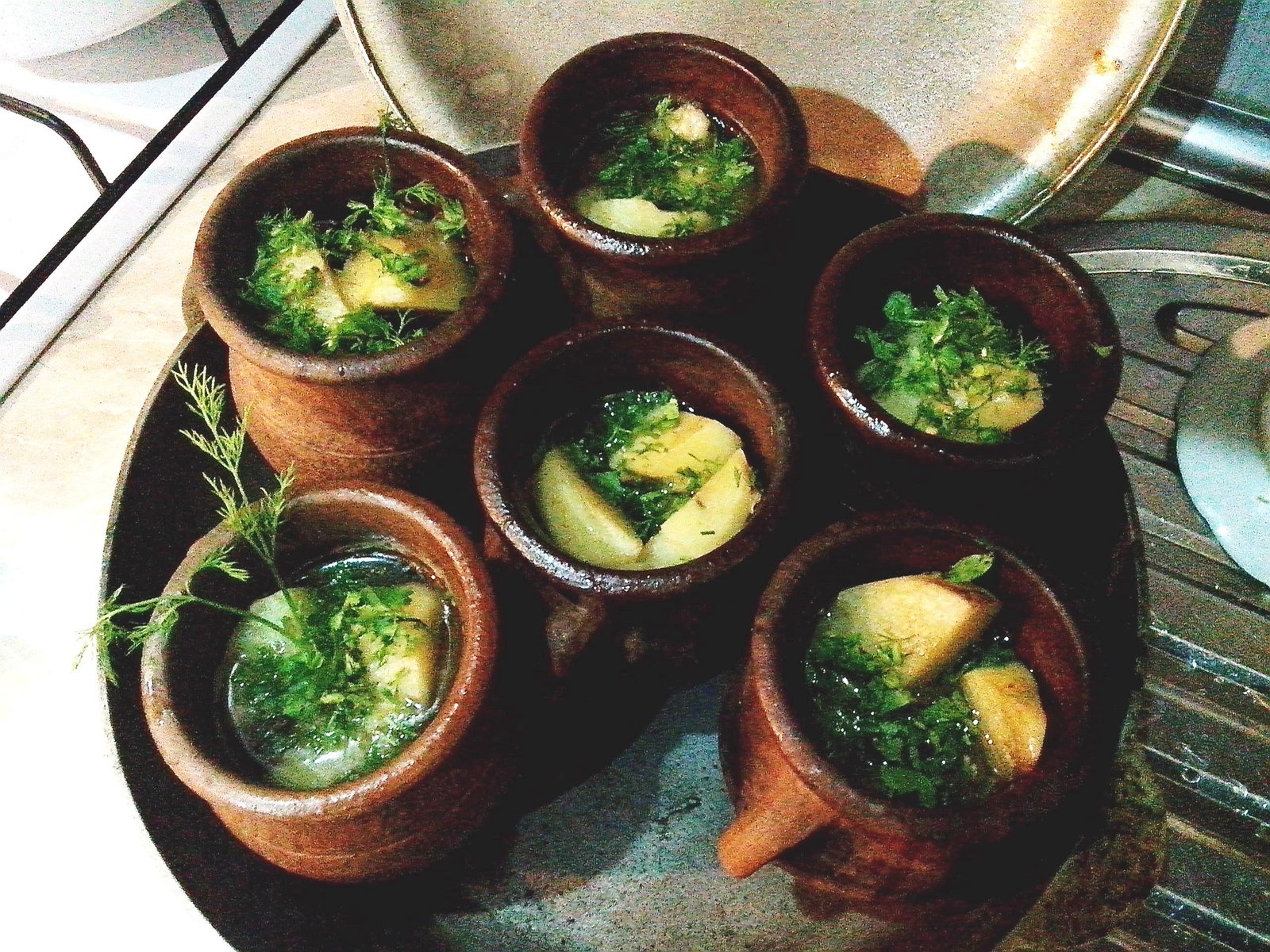
Piti in Azerbaijan: History, Tradition, Flavor, and Where to Try the Authentic Dish
Piti — the soul of Azerbaijani cuisinePiti is one of the dishes that best reflects the spirit of Azerbaijani cuisine. It is prepared in small clay pots where lamb, chickpeas, potatoes, onions, spices, and saffron slowly simmer for hours, revealing a deep and rich flavor. The dish is served in the very pot it was cooked in, creating a warm, homely atmosphere and a sense of connection to centuries-old culinary traditions.Its texture is warm and thick, the lamb becomes incredibly tender, the chickpeas add gentle sweetness, and saffron gives a delicate aroma that cannot be mistaken for anything else. Piti is not a dish to be rushed. It is meant to be savored slowly, allowing each aroma and layer of flavor to unfold.The history of piti: a journey through centuriesThe origins of piti can be traced back to ancient Turkic nomadic tribes who cooked meat in sealed pots placed over embers for long periods of time. This slow-cooking method made food nutritious, tender, and long-lasting during extended migrations. Over time, the concept of piti spread across the region, but it was in Azerbaijan that the dish reached its perfected form.The city of Sheki plays a special role in the history of piti. Here, the dish acquired its recognizable character: local cooks used clay pots made from Sheki’s red clay, respected the traditional slow-simmering method, and created a delicate balance of spices that was passed down from generation to generation. Because of this meticulous dedication to technique, the Sheki version of piti became legendary and is now considered the gold standard. Today, authentic Sheki piti stands as a living part of Azerbaijan’s cultural and gastronomic heritage.How piti is cooked and servedThe preparation of piti begins with carefully layering the ingredients inside a clay pot. The pot is placed in the oven or over low heat and left to simmer for several hours. Nothing is stirred during cooking — the ingredients must blend naturally, creating a rich and harmonious flavor.Serving piti is a ritual in itself. Once the dish is ready, the meal traditionally begins with the broth, which is poured into a separate bowl and enjoyed with bread. After that comes the second part: the tender meat and vegetables remaining in the pot are mashed into a thick, dense mixture. This two-step serving method is an essential part of the experience, allowing the depth of the dish to be appreciated fully.Where to try the best piti in AzerbaijanAlthough piti is served in various regions of the country, Sheki remains the true destination for anyone seeking its authentic flavor. Among the narrow streets of the old town and its family-run eateries, you can experience the taste of real Sheki piti. Locals often recommend Gagarin Restaurant for its cozy, homestyle approach. Serin Restaurant is known for preparing piti strictly according to classic tradition. Guests who want to enjoy the dish in a historical setting often choose the restaurant located inside the restored Karavansaray complex. For a more modern atmosphere, visitors turn to Sultan House Restaurant or Sheki Palace Shebekee Restaurant, both offering piti in elegant settings with calm, inviting interiors.Travelers exploring other regions will also encounter unique versions of the dish. In Baku, piti is prepared in atmospheric ethnorestaurants that preserve the traditional recipe while adding subtle urban touches. In Ganja, the dish is known for its slightly thicker and richer texture, offering yet another regional interpretation of this beloved specialty.Why piti is a must-try dish for every travelerPiti is not just a meal — it is a cultural story told through clay, meat, spices, and time. It reveals the essence of Azerbaijani life: respect for tradition, love for hearty homemade food, and the warm, unhurried rhythm of local hospitality. Tasting authentic Sheki piti gives travelers not only a rich flavor but also a sense of immersion into a culinary heritage that cannot be understood in passing.It is a dish that leaves a lasting memory — the kind of flavor tourists wish they could bring home. And although it’s nearly impossible to recreate true piti outside Azerbaijan, this rarity makes the experience even more meaningful.
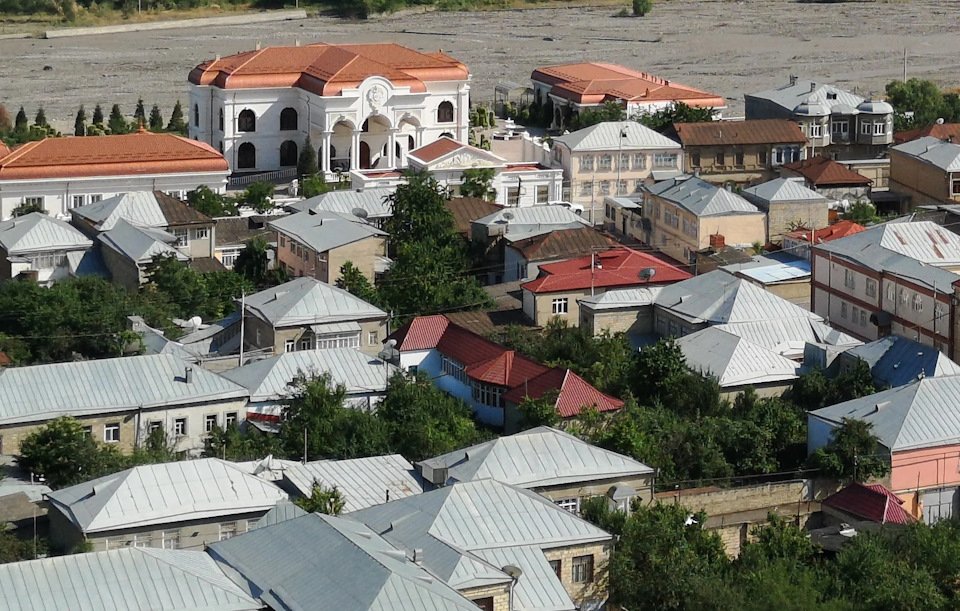
Red Settlement — The Little Jerusalem of the Caucasus
Nestled in the picturesque valleys of northern Azerbaijan, just a few kilometers from the city of Quba, lies a truly remarkable place — Red Settlement (Qırmızı Qəsəbə). It is known as the only all-Jewish town outside of Israel, home to the ancient community of Mountain Jews. This small but vibrant settlement stands as a living symbol of Azerbaijan’s long-standing tolerance, diversity, and cultural harmony.A Story Rooted in HospitalityThe origins of Red Settlement date back to the late 18th century, during the reign of Fathali Khan, ruler of the Quba Khanate. At that time, Jewish families fleeing persecution in nearby regions were granted refuge and land along the Gudiyalchay River. The new settlement was initially known as “Jewish Sloboda” but later became “Red Settlement,” named after the distinctive color of its brick houses.Over the centuries, the local Mountain Jewish community managed to preserve its language, religion, and traditions despite wars, migrations, and changing empires. Their language, Juhuri, is a fascinating blend of ancient Persian with elements of Hebrew — a living link to the community’s deep historical roots.Architecture and AtmosphereWalking through the narrow streets of Red Settlement feels like stepping back in time. Rows of red-brick houses line the roads, their windows decorated with intricate wooden shutters. Two beautifully restored synagogues — the Shokhet Synagogue and the Gilak Synagogue — once again serve as spiritual centers for the community.The calm rhythm of daily life here contrasts with the world beyond. Locals greet visitors warmly, proudly sharing stories about their ancestors, traditional recipes, and the customs that make this place truly unique.The Museum of Mountain Jews — A Keeper of MemoryOne of the most fascinating places in Red Settlement is the Museum of Mountain Jews of Azerbaijan — the first and only museum of its kind in the post-Soviet space.Its exhibits include ancient prayer books, national costumes, photographs, and everyday objects that illustrate centuries of Jewish life in the Caucasus. It’s not just a museum — it’s a bridge between generations.A Living HeritageRed Settlement is more than just a village — it’s a living testament to the endurance and spirit of the Mountain Jewish people.Although many families have emigrated to Israel, Russia, or the United States, their homes remain cared for, and their synagogues filled with light. The settlement still radiates a sense of peace, coexistence, and timeless dignity.Why You Should VisitA visit to Red Settlement offers a rare chance to experience a unique blend of history, faith, and culture.It’s a reminder that in Azerbaijan, diverse peoples have lived side by side for centuries — united by respect and shared humanity. Here, history doesn’t hide in books; it lives in the voices of locals, in the aroma of freshly baked bread, and in the melodies of the ancient Juhuri language.How to Get ThereRed Settlement is located 3 km from Quba and about 170 km north of Baku. You can reach it by car or bus along the Baku–Quba highway — a scenic 2.5–3-hour drive through the rolling hills of the Greater Caucasus.
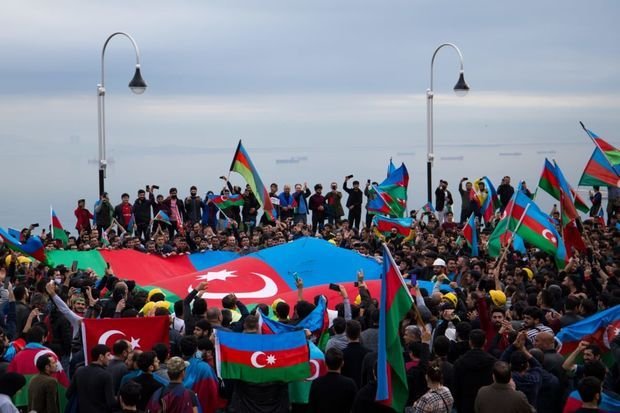
November 9 — State Flag Day in Azerbaijan: A Symbol of Honor, Independence, and Pride 2025
Every nation has symbols that reflect its identity, spirit, and destiny. For Azerbaijan, one of the most sacred among them is its State Flag, which proudly waves over the land where history and progress meet.Every year, on November 9, Azerbaijan celebrates State Flag Day — a day that honors not only the national colors but also the nation’s enduring journey toward independence and dignity.The Birth of a National SymbolThe modern flag of Azerbaijan was first adopted on November 9, 1918, during the era of the Azerbaijan Democratic Republic — the first democratic republic in the East. Its creators embedded within it the values of liberty, progress, and national consciousness.The flag consists of three horizontal stripes — blue, red, and green.Blue represents the Turkic heritage of the Azerbaijani people.Red stands for progress, modernization, and democracy.Green symbolizes Islam and the nation’s spiritual traditions.At the center lies a white crescent and an eight-pointed star, embodying the harmony between the nation’s history and its vision for the future.The Flag’s Journey Through HistoryFollowing the fall of the Democratic Republic in 1920, the flag was banned, becoming a symbol of hope and resistance throughout the Soviet era. For decades, it existed only in the hearts of those who dreamed of freedom. In the late 1980s, as the independence movement gained strength, the tricolor flag began to appear again in rallies and demonstrations. When Azerbaijan regained its independence in 1991, the flag was raised once more — this time as the eternal emblem of sovereignty.A Symbol of Unity and National PrideToday, the Azerbaijani flag is a living expression of national pride and unity. It rises above schools, government buildings, and homes — and waves high over the Caspian coast and mountain peaks. The State Flag Square in Baku holds special importance. Once home to one of the world’s tallest flagpoles, it stands as a monumental tribute to the values of patriotism and respect for the homeland.A Day Filled with MeaningOn November 9, Azerbaijanis across the country honor the flag with parades, concerts, exhibitions, and educational events. It’s a day of remembrance, pride, and gratitude — a celebration of the ideals that unite the nation.The three-colored flag of Azerbaijan represents the past, present, and future of the country — a bridge between generations and a reminder that true strength lies in unity.Whenever it waves in the wind, it tells the world one eternal truth: Azerbaijan is free, sovereign, and proud.
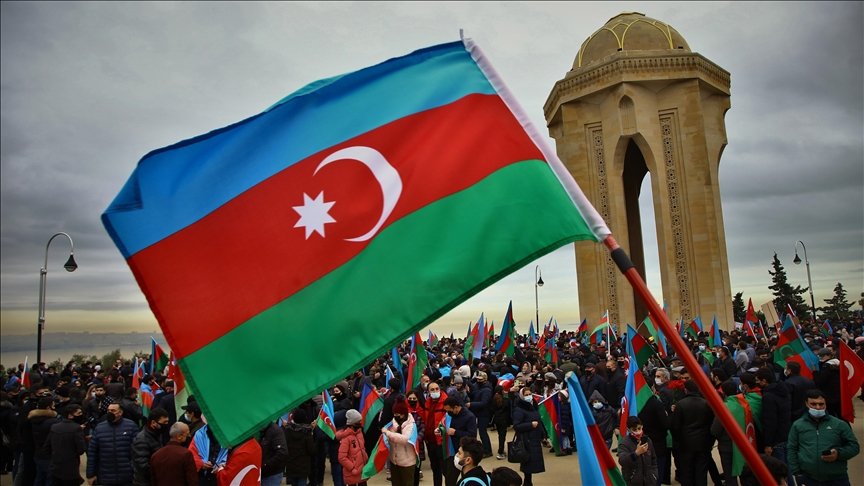
November 8 — Victory Day in Azerbaijan: A Symbol of Pride, Unity, and Rebirth
November 8 marks one of the most significant days in modern Azerbaijani history — Victory Day, celebrated in honor of the liberation of Shusha in 2020. It represents not only a military triumph but the restoration of historical justice, national unity, and the unbreakable spirit of the Azerbaijani people.Historical BackgroundFor decades, the Karabakh conflict remained an open wound in the hearts of millions of Azerbaijanis. Shusha, often called the “Cultural Heart of Azerbaijan,” was under occupation for nearly 30 years — its silence a reminder of loss and longing. In the autumn of 2020, during the 44-day Patriotic War, the Azerbaijani Armed Forces, under the leadership of President Ilham Aliyev, carried out a decisive campaign to reclaim the occupied territories. The liberation of Shusha became the turning point — both militarily and emotionally.On November 8, 2020, victory was declared. From that moment, this date became a symbol of national pride, resilience, and rebirth.The Spirit of ShushaShusha has always been more than just a city — it is a symbol of Azerbaijani culture, music, and identity. Its liberation meant the return of not only land but also the nation’s soul. The melodies of Uzeyir Hajibeyli once again echo through the streets, poetry of Natavan finds its voice, and festivals fill the air with joy.Today, Shusha thrives as a cultural capital once more — a living testament to the idea that a people united by heritage can never be broken.The Meaning of Victory DayVictory Day is both a celebration of triumph and a day of remembrance. It honors the courage of those who fought and sacrificed their lives for their homeland. Across the country, ceremonies, concerts, and memorials remind everyone of the price of freedom. For the older generation, November 8 fulfills a dream cherished for decades. For the youth, it serves as a reminder that independence must always be protected — through unity, strength, and devotion.Victory Day has become a cornerstone of national identity, symbolizing Azerbaijan’s determination to defend its sovereignty and its right to peace.A Victory Etched in HistoryEach year, Azerbaijan celebrates Victory Day with pride and reverence — military parades, cultural exhibitions, and concerts bring the nation together in remembrance. The day reflects the spirit of those who stood strong for their country, ensuring that their sacrifice will never be forgotten.Shusha, reborn and radiant, stands once again as the jewel of Karabakh. And November 8 will forever remind the world that Azerbaijan’s strength lies in its unity — for as long as the nation stands together, it will always prevail.

Beshbarmag Mountain — The Frozen Hand of Legends
Along the Caspian coast of northern Azerbaijan stands one of the country’s most mystical landmarks — Beshbarmag Mountain, whose name means “Five Fingers.” Its peaks rise like a massive stone hand reaching toward the heavens, as if frozen in a timeless gesture. This is not just a mountain — it is a place where the earth speaks in the language of legends.For centuries, Beshbarmag has guided travelers on the Silk Road. Its jagged silhouette, visible from miles away, was a sign of safety and rest. Caravans paused at its base to give thanks, sailors prayed before long voyages, and pilgrims tied ribbons to trees and stones, believing the mountain could grant their wishes. To this day, you’ll find those ribbons fluttering in the wind — offerings to the spirits of the mountain.Beshbarmag is not merely a geological formation; it is a monument of myth. Every ridge and rock carries a story whispered by generations.The Legend of the Giant’s Hand tells of a monstrous guardian who protected a sacred spring of life-giving water. A young man ventured to take some to save his sick sister. Furious, the giant reached out to catch him — but lightning struck, turning the creature to stone. His hand remained frozen in the air, forming the mountain’s unmistakable shape.Another tale speaks of seven warrior brothers who stood against invading armies. Refusing to surrender, they vowed to protect their homeland until the end. Moved by their courage, the earth transformed them into stone so their bravery would live forever. Their shapes, people say, became the fingers of the mountain.And then there is the poignant story of the girl and the wind. She loved a shepherd across the Caspian Sea. Every evening she climbed the mountain to call his name, waiting for his boat to appear. But one stormy night, he was lost to the waves. Her heart shattered, and the wind carried her soul into the rocks. Even now, locals say that when the wind whistles through Beshbarmag, it is her voice crying out to her lost love.Today, Beshbarmag remains a site of pilgrimage and wonder. Pilgrims still tie ribbons and whisper prayers, while travelers come to marvel at the raw beauty of its cliffs. The mountain has become one of Azerbaijan’s must-visit spiritual landmarks — a place where you can climb to the top and feel the ancient energy of the land.The ascent is not too difficult; a stone path leads up toward the summit. The climb takes about half an hour, and with each step, the world below opens wider — the Caspian Sea glimmers like silver, the horizon stretches endlessly, and the wind carries stories from centuries past. Standing at the top, you feel both humbled and alive, as if time itself has stopped.Beshbarmag is more than a mountain. It is a sacred symbol of endurance, faith, and timeless beauty — a meeting point between myth and the real world. Here, every gust of wind seems to whisper an ancient name, every stone holds the memory of courage and love.

War Trophies Park in Baku — A Living Monument to Courage and Memory
On the southern edge of Baku, along Khojaly Avenue, stands one of the most symbolic and meaningful places in modern Azerbaijan — the War Trophies Park. Opened on April 12, 2021, the park became a monument to victory, resilience, and national unity, embodying both the pain and the pride of a nation that lived through the Second Karabakh War.From Idea to SymbolThe idea of creating the park emerged soon after the war ended in 2020. Its opening united the country around a shared sense of gratitude and remembrance. President Ilham Aliyev personally inaugurated the park, emphasizing that it was not meant to glorify war, but to remind the world of the price of peace.Today, the War Trophies Park stands as an emotional symbol of a new chapter in Azerbaijan’s history — a place where history speaks through every artifact.What You’ll SeeThe park covers a vast area of several hectares, featuring over 300 pieces of military equipment captured during the Second Karabakh War. Visitors can see destroyed tanks, armored vehicles, artillery units, and personal belongings of soldiers recovered from the liberated territories. One of the most striking features is a massive installation made from captured vehicles, transformed into a monumental sculpture symbolizing the end of war and the dawn of peace. Nearby stands a wall of flags and helmets, each one carrying its own story — a silent tribute to courage and sacrifice. A dedicated area displays maps, photographs, and documents about the liberated regions of Karabakh, showing both the devastation of war and the efforts of reconstruction that followed. Many visitors spend long moments here — reflecting, remembering, and honoring those who fought.Symbolism and MeaningThe park is deeply symbolic. It doesn’t glorify war — it mourns its losses and honors its heroes. Each exhibit tells a human story: of bravery, endurance, and the pursuit of peace.For Azerbaijanis, the War Trophies Park is a place of national memory and gratitude. For foreign visitors, it offers a unique chance to understand the country’s modern history and the deep emotional connection between the people and their homeland.Architecture and AtmosphereThe park’s design is both solemn and impressive. Wide alleys, memorial walls, and carefully planned zones create a space for reflection and respect rather than spectacle. Information panels and multimedia displays tell the story of the conflict in detail, while memorial plaques commemorate key battles and heroes. As evening falls, the park transforms — soft lighting gives it a calm, sacred atmosphere, turning it into a symbol of remembrance and resilience.Many visitors describe it as a place where silence speaks louder than words.National SignificanceThe War Trophies Park is more than a museum — it’s a national symbol of unity and peace. It reminds every visitor that freedom and stability come at a cost, and that remembrance is the foundation of progress. Today, the park welcomes thousands of visitors every year — from veterans and students to international tourists who come to understand Azerbaijan’s recent history. It has become part of the country’s cultural landscape and a powerful stop on Baku’s sightseeing routes.Visitor InformationAddress: Khojaly Avenue, Baku, AzerbaijanOpening hours: Daily, 10:00–19:00Entrance fee: Paid, but symbolicHow to get there: By metro (Khojaly station) or bus routes heading south from the city centerThe War Trophies Park is not merely a collection of military relics — it’s a story told in iron and silence. It reminds visitors that peace is fragile and precious, and that a nation which remembers its past builds a stronger, brighter future. This park is a living testimony to courage, unity, and the enduring spirit of the Azerbaijani people.

Architecture of Baku — A Journey Through Time and Innovation
The architecture of Baku is more than just buildings — it is a chronicle of changing eras, cultures, and ideas, captured in stone and glass. Here, East meets West, antiquity stands beside futurism, and tradition coexists with innovation. Every street in the Azerbaijani capital is like a page of history written in marble, sandstone, and glass.Baku cannot be understood at first glance. The city seems to breathe with different ages: from the vibrant modern center, you can easily step into the narrow alleys of the ancient town, where every stone carries the scent of time.From the Ancient City to the Oil CapitalAt the heart of old Baku lies Icherisheher, or the Inner City — a living open-air museum and one of Azerbaijan’s first UNESCO World Heritage Sites. Its fortress walls, cobblestone streets, and centuries-old courtyards preserve the atmosphere of the medieval East.Here stands the Maiden Tower (12th century), surrounded by mysteries and legends — tales of love, sacrifice, and pride. On a nearby hill rises the Palace of the Shirvanshahs (15th century), a masterpiece of Islamic architecture adorned with intricate carvings and domes that reflect light like stories carved in stone.By the end of the 19th century, Baku had become the oil capital of the world, and its architecture transformed once again. Foreign engineers, artists, and architects flocked to the city, and Baku flourished. Oil barons built luxurious mansions inspired by Paris and Vienna but enriched with Eastern ornamentation and Azerbaijani soul. That was when Baku earned the nickname “the Paris of the Caspian.” Many of these buildings still grace the central streets — Nizami, Istiglaliyyat, and Fizuli Avenue.The Soviet Era and Its InfluenceAfter 1920, Baku became part of a new state, and its architectural identity changed once more. The elegance of the early oil-boom years gave way to the monumental symmetry of Soviet classicism. Freedom Square and the Government House are prime examples of Stalinist architecture — massive yet balanced. Even during this period, Azerbaijani architects managed to preserve national elements — domes, arches, and traditional motifs softened the rigid geometry of Soviet design, giving it warmth and individuality.By the 1960s–1980s, the city continued to grow. New residential districts, theaters, museums, and universities appeared. Architects began experimenting with form and space, seeking to merge heritage with modern ideas.Modern Baku: A Dialogue of Glass and StoneToday, Baku is experiencing an architectural renaissance. The city expands rapidly but with deep respect for its past. The symbols of this new era are the Flame Towers — three skyscrapers rising into the sky like tongues of fire. They represent the eternal element of flame, one of the oldest symbols of Azerbaijan, once a sacred land for Zoroastrians. Another modern icon is the Heydar Aliyev Center, designed by the legendary Zaha Hadid. Its fluid, wave-like curves seem to defy gravity, creating a continuous flow of space. The building is not just a cultural hub — it is a statement of identity, reflecting a creative and forward-looking Azerbaijan.Meanwhile, the city preserves its old quarters with care, restoring historical buildings and turning them into museums, galleries, and cozy cafés. The seamless coexistence of old and new gives Baku its unique architectural rhythm — alive, evolving, and harmonious.Walking through Baku, one can feel how every building tells a story — some whisper of merchants and craftsmen from the old city, others of the oil barons and their golden age, and others still of daring modern architects shaping the skyline of tomorrow.Architecture in Baku is not just about urban design — it is the embodiment of the nation’s character: proud yet hospitable, deeply rooted in tradition yet boldly embracing the future.

Sheki Khan’s Palace — The Jewel of the Caucasus
Nestled in a lush valley at the foot of the Caucasus Mountains lies the ancient town of Sheki — one of Azerbaijan’s most picturesque and historically rich destinations. Among its cobbled streets and shady plane trees stands a masterpiece of oriental art — the Palace of the Sheki Khans. More than just an architectural monument, it is a living testament to the country’s history, craftsmanship, and refined taste.The palace was built in 1762, during the reign of Haji Chelebi Khan, the founder of the Sheki Khanate. At that time, Sheki was a thriving political and cultural center of the region. The palace served as the khan’s summer residence, a place for receptions, diplomatic meetings, and leisure. It was designed and constructed by local artisans who achieved perfect harmony between architecture and nature. What makes this structure truly remarkable is that it was built without a single nail or drop of glue — every joint, every beam was fitted with incredible precision by hand.One of the most striking features of the palace is its stained-glass windows known as “shebeke.” Thousands of tiny pieces of colored glass are fitted into wooden latticework, forming intricate geometric patterns. As sunlight streams through these windows, it fills the rooms with shimmering colors, bringing the painted walls to life. The play of light and shade creates a feeling of peace and timeless beauty — a hallmark of Azerbaijani artistry.Every pattern in the palace tells a story. The geometric designs symbolize the perfection and infinity of the universe, while floral motifs embody the beauty of nature and the joy of life. Many of the wall paintings depict scenes of royal hunts, festive gatherings, and mythical creatures — reflections of power, wisdom, and courage. Each symbol carries its own meaning, forming a visual language that connected art with philosophy.According to legend, one of the palace’s anonymous masters left a hidden mark within the ornamentation — a secret signature disguised among thousands of intricate patterns. Its exact location remains a mystery, but it serves as a silent reminder of the human hands that created this timeless work.The palace’s interior is just as captivating as its façade. The walls are adorned with vivid frescoes, delicate patterns, and symbolic imagery that once inspired awe in every visitor. When sunlight falls through the shebeke windows, the throne room glows in a soft golden hue — intentionally aligned so that the light highlights the khan’s seat of power. Every corner of the palace reflects the harmony between precision, symbolism, and elegance.Despite wars, earthquakes, and the passage of time, the Palace of the Sheki Khans has survived almost intact. Careful restoration work has preserved its 18th-century frescoes and stained glass, returning the palace to its original splendor. Today, it is proudly included in the UNESCO World Heritage List, recognized as one of Azerbaijan’s most remarkable cultural treasures.Visiting the Sheki Khan’s Palace is not just a journey into history — it’s an encounter with the soul of a nation. Within its walls, centuries of craftsmanship, philosophy, and artistry continue to shine, reminding every visitor that true beauty never fades.

Azerbaijani Breakfast — A Taste of Culture and Tradition
When you visit Azerbaijan, one of the best ways to understand the soul of this country is through its food — and the day begins with breakfast.An Azerbaijani breakfast is not just a morning meal. It’s a ritual of hospitality, a reflection of the land’s abundance, and a warm invitation to experience the country’s culture right at the table.The Meaning Behind the MorningFor Azerbaijanis, breakfast is more than a necessity — it’s a moment to gather, share, and start the day with family or guests. It symbolizes care, togetherness, and comfort. It’s also a celebration of local ingredients: fresh dairy, golden honey, fragrant bread, herbs, vegetables, and fruits — all served beautifully with the country’s signature black tea. This is the time when conversations flow, laughter fills the room, and the aroma of freshly baked bread blends with that of brewed tea.What’s on the Azerbaijani Breakfast TableThe traditional Azerbaijani breakfast is colorful, rich, and incredibly satisfying. Here are some of its most beloved elements:Fresh bread — whether it’s soft chorek or thin lavash, often baked in a traditional tandoor.Cheese varieties — mild, salty, sometimes mixed with herbs or nuts.Butter and kaymak — creamy, rich dairy products that melt on warm bread.Eggs with tomatoes (pomidor-yumurta) — a simple yet flavorful dish that’s a breakfast favorite.Homemade jams and honey — made from seasonal fruits or forest herbs.Fresh vegetables — tomatoes, cucumbers, greens, and herbs bring a refreshing balance.Black tea — served in pear-shaped glasses called armudu, it’s the heart of every Azerbaijani breakfast table.Sometimes, especially on weekends or family gatherings, breakfast can turn into a feast, including soups or meat dishes — proof that hospitality here knows no limits.Where to Try an Authentic Azerbaijani BreakfastIn Baku, many hotels and restaurants offer the “Azerbaijani Breakfast” — a certified national concept officially presented as part of the country’s culinary identity. However, for the most authentic experience, venture outside the city — to small family guesthouses or local cafés. There, breakfasts are slower, more personal, and prepared with ingredients sourced from local markets or farms. It’s a chance to experience home-style hospitality, where the food is fresh and the atmosphere feels like visiting old friends.Cultural Notes and Traditions- Breakfast is not rushed — it’s a time to enjoy and connect.- Everything is served fresh and with care; simplicity is a form of respect.- Being invited to breakfast is a sign of friendship and trust.- Tea is served continuously — not just a drink, but a companion to conversation.Why It’s Worth ExperiencingTo taste the Azerbaijani breakfast is to understand the heart of the nation. It’s where flavors, warmth, and culture meet. You’ll see how much importance people here place on food, family, and time shared together. It’s not about luxury — it’s about sincerity. Every bite tells a story, every sip of tea carries warmth.The Azerbaijani breakfast is a feast of flavors and feelings — an invitation to slow down and savor the moment. It’s a beautiful reflection of a culture where hospitality is a way of life and where every morning begins with generosity.So, when you sit at that table, surrounded by bread, cheese, honey, and tea — remember: this isn’t just breakfast. This is Azerbaijan saying “Welcome.”

Legends of Azerbaijan — Timeless Tales of Love, Honor, and Flame
Azerbaijan is a land where antiquity meets eternity.Here, flames have burned for millennia, the wind whispers ancient stories, and the mountains keep the memory of generations. Every corner of the country — from the steppes of Gobustan to the shores of the Caspian Sea — is steeped in legends woven from love and loyalty, wisdom and sorrow, honor and destiny.The legends of Azerbaijan are not mere tales. They are mirrors of the nation’s soul — a reflection of its philosophy, values, and way of seeing the world.Passed down from one generation to the next, they have become part of a national code — something you cannot read in books, but can only feel with your heart.Legends as a Bridge Between Past and PresentSince ancient times, Azerbaijanis have believed that everything in the world has a soul — the mountains, rivers, trees, and even the wind. Every natural phenomenon had its own story: why the stars stand still in the sky, why the water murmurs so sadly, or why one mountain seems taller than another. These stories didn’t just explain the world — they taught people how to feel it. Through legends, the people expressed their fears, hopes, and love. And perhaps that is why these stories are still alive today — because there is something eternal within them.The Legend of the Maiden TowerIn the heart of Baku’s Old City stands the mysterious Maiden Tower, wrapped in layers of myth and sorrow.Its ancient stones whisper a story of love, defiance, and tragedy. Long ago, the ruler of Baku decided to marry his own daughter to an old and powerful khan, seeking to strengthen his rule. The young princess, however, was in love with a simple man from the city. She pleaded with her father, but he remained unyielding. In despair, the girl asked him to build a tall tower by the sea, promising to marry once it was finished. When the tower was completed, she climbed to its highest point, looked out over the restless waves of the Caspian — and threw herself into the sea. Since then, the Maiden Tower has stood as a symbol of purity, loyalty, and the courage to follow one’s heart.On quiet nights, when the wind blows from the sea, locals say you can still hear her whisper — a voice carried by the waves.Yanar Dag — The Eternal Flame of the EarthOn the Absheron Peninsula, amid dry hills and salty winds, a flame has burned for centuries — Yanar Dag, “the Burning Mountain.”Its golden fire never fades, flickering like a heartbeat of the earth. According to legend, a shepherd once lit a torch to find his lost goat and accidentally set the hillside ablaze when gas from the ground caught fire. But the flame did not die — it lived on, as if the mountain itself had awakened.Since then, people have come to Yanar Dag to pray, to purify their souls, and to feel the living breath of the earth — a symbol of eternity and divine energy.The Tears of Jeyran — Love That Became WaterNear Baku lies the serene Lake Jeyranbatan, whose waters glisten like glass in the sunlight. Its name means “the place where Jeyran wept,” and the legend behind it is one of love and loss. Once there lived a girl named Jeyran who fell in love with a young man from a rival clan. Their love was forbidden. When their families discovered their secret, they tried to separate the lovers. The couple attempted to escape, but the young man was caught and killed. Heartbroken, Jeyran fell to her knees and wept so bitterly that her tears filled the valley — forming the lake we see today. It is said that on misty evenings, if you listen closely, you can still hear her quiet sobs drifting over the water.The Legend of the Brothers — A Blood OathLong ago, two warriors from opposing tribes fought side by side against a common enemy. They saved each other’s lives many times, unaware that fate had once bound them as brothers — separated in childhood by war.In the final battle, one accidentally struck the other down. When he learned the truth, the surviving brother fell to his knees and cried:“If I have spilled my brother’s blood, let it become an oath — that our land shall never again know the sin of brother against brother.”This legend has endured through the ages as a reminder that true strength lies not in vengeance, but in forgiveness.The Mother and the WindIn the mountains of Nakhchivan lived a woman whose son went to war and never returned. Each evening she climbed the cliffs, calling out his name. Her voice, filled with love and sorrow, merged with the wind — and became one with it.Even today, the wind in those valleys carries a haunting melody.The elders say:“It is the mother’s voice, still searching for her son, carried to the heavens by the wind.”Why the Legends EndureThe legends of Azerbaijan are more than just stories from the past — they are living voices of the land. You can still hear them in the songs of the ashugs, in the whispers of the Caspian near the Maiden Tower, in the sacred fire of Yanar Dag, and in the calm waters of Lake Jeyranbatan. Each tale is like a thread in an ancient carpet — woven with time, fate, and the human soul. And perhaps that is why, when you listen to these stories, you feel something more than curiosity — you feel the heartbeat of a timeless land.

The Mud Volcanoes of Azerbaijan — Where the Earth Breathes
Azerbaijan is often called the Land of Fire — known for its eternal flames and burning gas seeps. Yet, beyond the fiery hills of Yanar Dag lies another wonder that makes this land truly unique: the mud volcanoes.Here, across the Absheron Peninsula, the Gobustan plateau, and the shores of the Caspian Sea, the very earth seems alive. It bubbles, murmurs, exhales warm gases, and throws up cool gray mud straight from its depths.The Land of Living EarthMud volcanoes in Azerbaijan are not rare phenomena — they are part of the country’s identity. Out of roughly 700 known mud volcanoes in the world, more than half are located here. This remarkable concentration is the result of Azerbaijan’s unique geology: beneath its surface lie rich oil and gas fields, and these reservoirs feed the underground pressure that pushes gas and mud upward. When that pressure grows too high, the earth bursts open. A mixture of clay, minerals, and gas erupts through the crust, forming miniature cones or wide craters that harden into strange, lunar-like landscapes. Over time, these sites have become natural sculptures — raw, untamed, and endlessly fascinating.Legends and Ancient BeliefsThe phenomenon of mud volcanoes has long captured human imagination. Ancient chronicles and folklore speak of lands where the earth breathes. Locals once believed that these places were gateways to the spirit world — points where the Earth released its hidden energy.According to one legend, the Earth Mother Goddess, Ana Gaya, chose these lands as her resting place. When angered, she exhaled her fury through bubbling mud and gas, shaking the ground beneath her. For the ancient Zoroastrians, who worshipped fire, these eruptions were sacred signs — a divine message rising from the heart of the earth itself.From Myth to ScienceAs science advanced, these mysterious outbursts became subjects of study. Geologists discovered that mud volcanoes are caused by trapped methane and hydrocarbons beneath the surface — the same gases that fuel Azerbaijan’s oil fields. The first recorded eruption occurred in 1810, near modern-day Baku, when a fiery column of gas and mud rose into the sky. Nearly two centuries later, in 2001, the world watched in awe as Boyuk Kanizadag volcano erupted, sending flames over 300 meters high — one of the largest mud volcano eruptions ever recorded.A Landscape from Another WorldVisit the Gobustan mud volcanoes, and you’ll feel like you’ve stepped onto another planet. The gray cracked earth stretches endlessly, dotted with cone-shaped mounds and pools of bubbling clay. The silence is broken only by the gentle gurgle of mud and the hiss of escaping gas — the sound of a living landscape. At sunset, the view turns surreal: the glowing light paints the terrain in gold and silver tones. Many travelers and photographers call this area “Azerbaijan’s lunar valley.” Even NASA scientists have compared Gobustan’s terrain to images of Mars, using satellite data from this region for geological studies.Fascinating Facts> Azerbaijan is home to over 350 mud volcanoes, including both land and underwater formations.> More than 140 volcanoes lie beneath the Caspian Sea, some of which create temporary islands after eruptions.> In 2023, one such eruption near the Caspian’s Kumani Bank formed a “ghost island” that soon vanished back into the sea.> The volcanic mud is rich in minerals and is used in therapeutic treatments for its anti-inflammatory properties.> In 2022, the Mud Volcanoes Tourism Complex opened near Baku, allowing visitors to safely observe eruptions and learn about this natural phenomenon.Mud volcanoes are more than a geological curiosity — they are symbols of Azerbaijan’s raw energy.They remind us that the earth here is never still; it breathes, transforms, and speaks in bursts of gas and liquid clay. This connection between fire, earth, and life itself runs deep in Azerbaijani culture. It is the pulse of a land in constant motion — the heartbeat of the “Land of Fire.”
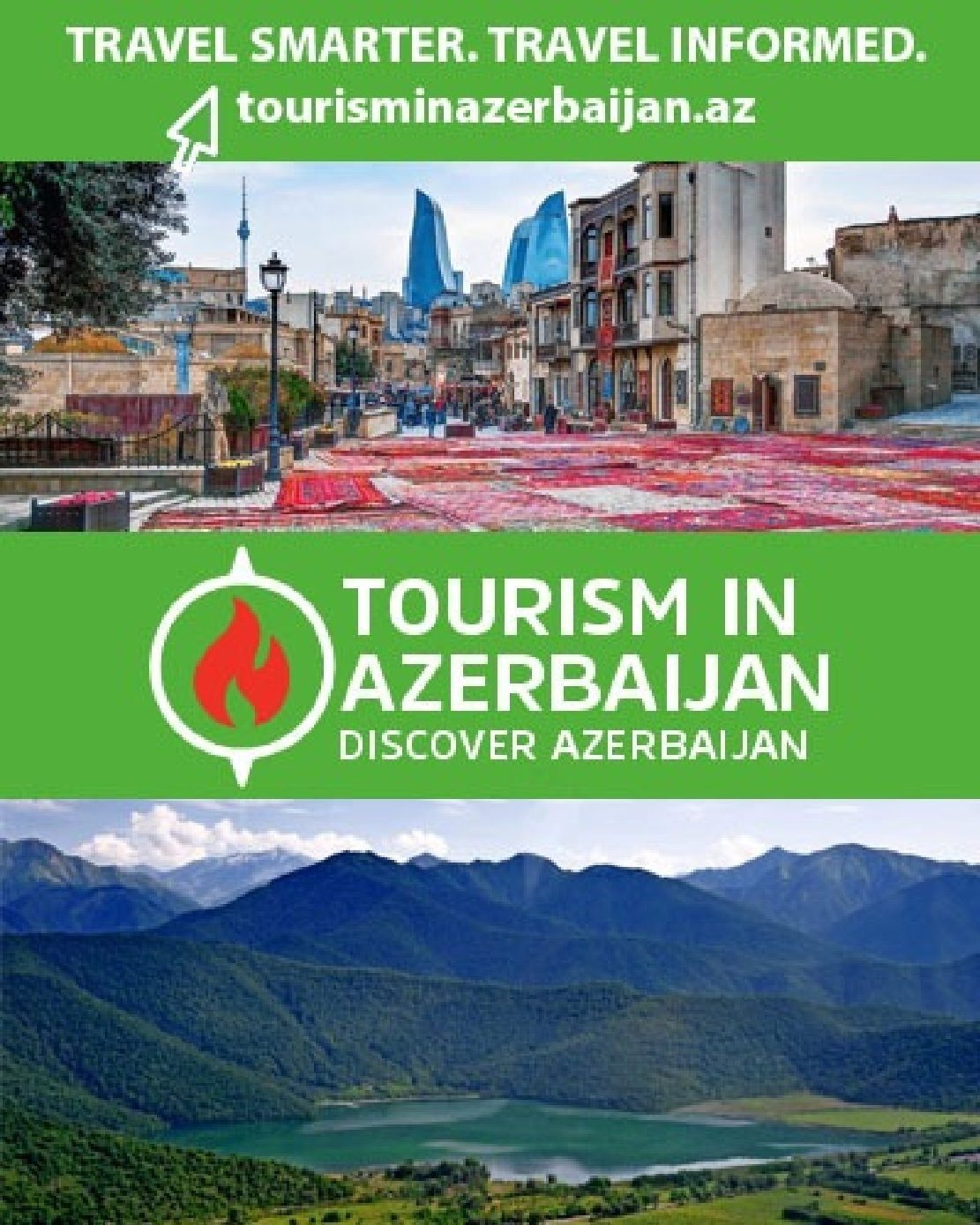
.jpg)



